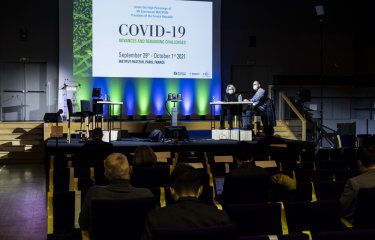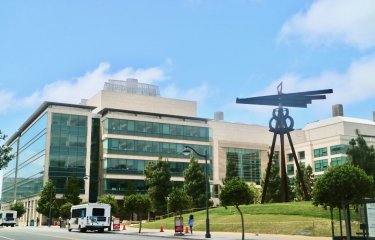With the emergence of the Omicron variant, healthcare facilities remain highly vulnerable to virus spread. Effective surveillance of viral presence in these facilities is therefore crucial and needs to be adapted according to outbreak risk. Scientists from the Institut Pasteur worked with colleagues to analyze the reactive use of antigen testing in a long-term care facility following a detected surge in outbreak risk.
Hospitals are on the front line in tackling the ongoing COVID-19 pandemic and are highly vulnerable to virus spread. In facilities providing follow-up and long-term care, which are not supposed to accept patients with COVID-19, the virus can also spread actively if patients or staff who have been infected with the virus in the community or in other care facilities are admitted. If there is a surge in outbreak risk in hospitals, it is crucial to respond by boosting surveillance so that infected individuals can be identified and isolated as soon as possible, thereby preventing the virus from spreading widely in the facility and infecting already weakened patients.
Two rounds of antigen screening prevent up to 75% of infections
To facilitate the implementation of effective surveillance strategies for COVID-19 cases in long-term care facilities, scientists from the Institut Pasteur and their colleagues conducted a modeling study that was published in Nature Communications. The scientists simulated outbreaks in several care facilities, assuming that various containment measures to restrict the risk of COVID-19 (social distancing, mandatory face masks and vaccination) were already in place. They performed a counterfactual analysis to assess the effectiveness of population screening using antigen tests in preventing SARS-CoV-2 transmission following a sudden surge in outbreak risk at the facility.
"With two rounds of planned antigen screening, up to 75% of nosocomial infections were able to be prevented, compared to 64% with just one round of screening and 47% for routine PCR testing only for symptomatic cases," explains David Smith, a PhD student in the Epidemiology and Modeling of Bacterial Escape to Antimicrobials Unit at the Institut Pasteur and co-author of the study. A period of 4 to 5 days between the two screening rounds was optimal for preventing transmission, given the time-variant nature of sensitivity to the test.
Assessing the health-economic benefits of screening
The scientists also showed that the target of the screening (patients or healthcare workers) made a difference. When the outbreak risk was high, it was more effective to target patients instead of healthcare workers to avoid transmission. But in facilities that were well protected against outbreaks because of other control measures, the efficacy of antigen screening was similar regardless of whether patients or healthcare workers were targeted. The scientists then assessed the health-economic benefits of the screening protocols. The underlying risk of an outbreak was the main factor in the cost effectiveness of screening. This factor was more important than the timing of the screening (immediate or delayed), the type of test used (antigen or RT-PCR) or the target (patients or healthcare workers).
Source:
Rapid antigen testing as a reactive response to surges in nosocomial SARS-CoV-2 outbreak risk, Nature Communications, January 11, 2022
David R. M. Smith1,2,3, Audrey Duval1,2,4, Jean Ralph Zahar4,5, Lulla Opatowski1,2, Laura Temime3,6
1 - Institut Pasteur, Epidemiology and Modelling of Antibiotic Evasion (EMAE), Paris, France
2 - Université Paris-Saclay, UVSQ, Inserm, CESP, Anti-infective evasion and pharmacoepidemiology team, Montigny-Le-Bretonneux, France
3 - Modélisation, épidémiologie et surveillance des risques sanitaires (MESuRS), Conservatoire national des arts et métiers, Paris, France
4 - IAME, UMR 1137, Université Paris 13, Sorbonne Paris Cité, Paris, France
5 - Service de Microbiologie Clinique et Unité de Contrôle et de Prévention du Risque Infectieux, Groupe Hospitalier Paris Seine Saint-Denis, AP-HP, Bobigny, France
6 - PACRI unit, Institut Pasteur, Conservatoire national des arts et métiers, Paris, France






